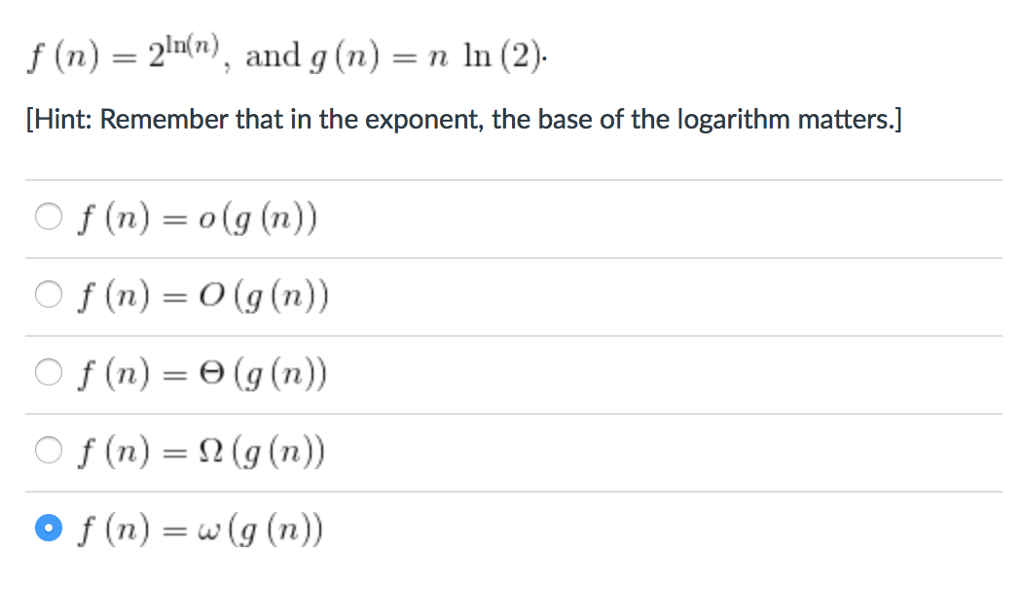Answered step by step
Verified Expert Solution
Question
1 Approved Answer
f(n) = 2^ln(n), and g(n) = n ln (2). f(n) = o(g(n)) f(n) =O(g(n)) f(n) = Theta (g(n)) f(n)= Ohm (g(n)) f(n) = omega (g(n))

Step by Step Solution
There are 3 Steps involved in it
Step: 1

Get Instant Access to Expert-Tailored Solutions
See step-by-step solutions with expert insights and AI powered tools for academic success
Step: 2

Step: 3

Ace Your Homework with AI
Get the answers you need in no time with our AI-driven, step-by-step assistance
Get Started


